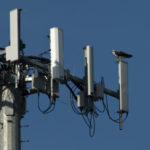 AT&T and T-Mobile are opening up their networks to each other’s customers in New York and New Jersey in an effort to improve coverage and performance in the wake of Hurricane Sandy. Under the roaming deal, users will make calls and use data on whichever network is stronger in their area.
AT&T and T-Mobile are opening up their networks to each other’s customers in New York and New Jersey in an effort to improve coverage and performance in the wake of Hurricane Sandy. Under the roaming deal, users will make calls and use data on whichever network is stronger in their area.
Subscribers will not have to make any changes to their plans. It’s unclear how long this will remain in effect but it’s likely to stick around until cellular service is closer to being back to normal. T-Mobile said Tuesday night that its network in New York City is more than 80 percent operational. AT&T has said it’s working on improving service in impacted areas. FCC Chairman Julius Genachowski said in a press conference Tuesday that 25 percent of cell sites in 158 counties across 10 states hit by the storm are down.
AT&T and T-Mobile both work off of the same frequency bands and GSM radios, which makes interoperability possible. It’s situations like this that demonstrate the value of more interoperability. But carriers are making that harder to achieve even though with LTE, many operators are using the same technology and in the 700 MHz band are even using the same frequency.
As Kevin Fitchard writes: Instead of coalescing around mutually exclusive technologies, U.S. carriers are now coalescing around mutually exclusive spectrum bands. But the result is the same. A Verizon LTE phone won’t work on an AT&T LTE network and vice versa. This was always going to be a problem, but Verizon’s proposed fire sale of 700 MHz licenses would essentially codify that rift. If Verizon dumps all of its lower 700 MHz spectrum, it won’t share a single similar license with any of the country’s other operators, effectively creating its own private band within the 700 MHz airwaves.
But when the cellular networks going down in the wake of Sandy, and the threat of more problems to come, there’s value in having redundancy in the form of interoperable networks as T-Mo and AT&T are showing today.
